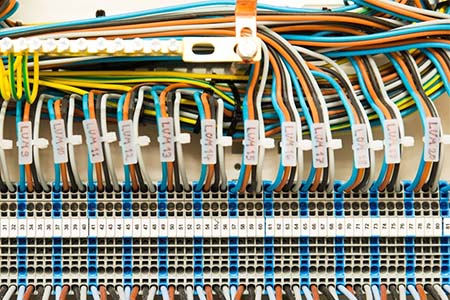Our News
Contact Us
- Tel:0086-135 8771 2673
- Tel:0086-135 8771 3265
- Email:[email protected]
- Address:No.666 East Jiaotong Rd.,Wu'niu Street,Yongjia,Wenzhou,Zhejiang,China
What’s the Difference Between a Regular Relay and a Power Relay?
News | Aug 11,2023
Relays, with their ability to control one electrical circuit by opening or closing contacts in another circuit, are indispensable in various electronic and electrical systems. Two primary types dominate the market: the regular relay and the power relay. So, how do they differ, and where does each excel?
What are Relays?
In order to gain a better understanding of the various types of relays, it is necessary to first establish a clear definition of what a relay actually is. At its core, a relay can be described as either an electromechanical or solid-state switch.
It functions by utilizing an input signal, typically derived from a low-power circuit referred to as the control circuit, to regulate and control output in a high-power circuit known as the load circuit.
What distinguishes a relay from other devices is its ability to achieve this without the need for any direct electrical connection between the two circuits, thereby offering crucial protection for delicate components.
The Regular Relay: Not Just ‘Regular’
Regular relays, often termed “signal relays” or “low-power relays,” are adept at handling signal-level loads.
Their primary attributes include:
Switching Current: They’re designed for lower currents, typically below 2A.
Compactness: Given their role in low-power applications, these relays are compact, ideal for dense circuit boards.
Precision: Regular relays prioritize accuracy in signal transmission, ensuring minimal contact resistance.
Applications: Beyond telecommunication circuits, you’ll find them in medical devices, audio equipment, and instrumentation.
Durability: While they might seem delicate due to their size, many modern regular relays are built to endure, with long lifespans and high operational cycles.
Applications of regular relays
Regular relays are versatile and widely used devices that play a crucial role in many industries and applications. These electromechanical switches provide a reliable means of controlling electrical circuits, and they can be found in a multitude of devices and systems. From industrial automation to telecommunications, regular relays are used to control power distribution, signal switching, and much more.
The Power Relay: The Heavy Lifter
Power relays, true to their name, are the heavy lifters in the relay world, designed for more substantial loads:
Switching Current: They are built for the big leagues, handling currents ranging from 10A and above.
Design: Power relays are typically bulkier, reflecting their duty to handle high currents without overheating or failing.
Contact Material: Their contacts are robust, and designed for durability and to resist welding or excessive wear.
Applications: Power relays are ubiquitous in areas requiring substantial power control, from household appliances to industrial equipment and even in some automotive systems.
Safety Features: Given the high power they control, many power relays come with enhanced safety features, including arc suppression methods and overload protection.
Applications of power relays
Power relays are essential components in electrical systems, serving to control and protect circuits by switching high-power loads on and off. They are widely used in various industries, including manufacturing, automation, aerospace, and telecommunications.
Power relays play a crucial role in ensuring the safe and efficient operation of electrical systems, preventing damage to sensitive equipment and preventing electrical faults.
Making the Right Choice
Your choice between the two largely depends on the specifics of your application:
Load Assessment: Gauge the current and voltage needs of your load. High-power demands naturally gravitate towards power relays.
Space Constraints: In designs where every millimetre counts, the diminutive size of regular relays can be a boon.
Operational Frequency: If your application involves frequent switching, especially at high currents, power relays might be more up to the task, given their robustness.
Safety Concerns: In settings where safety is paramount, the added features of power relays can be crucial.
Cost Implications: Regular relays, with their simpler designs, might be more cost-effective for applications that don’t require the muscle of power relays.
Conclusion
While the basic principles of all relays remain the same, complexities in design, application, and capacity differentiate conventional and power relays. As technology advances, the lines between these categories may blur further. However, understanding their core differences ensures that you can always make the right choice to optimize performance and cost.
--- END ---

